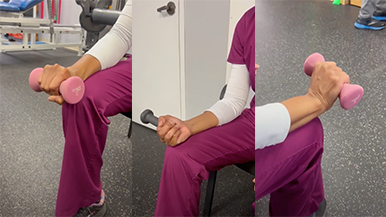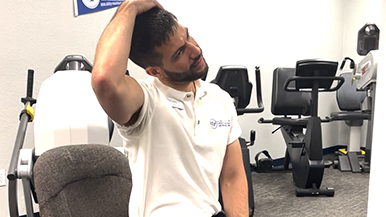What is Frozen Shoulder and What Are Your Treatment Options?
 Frozen shoulder is the commonly known name for a medical condition called adhesive capsulitis. The characteristics of this shoulder condition are joint stiffness, pain, and loss of mobility, which could give someone the impression that their shoulder is “frozen” and will not move properly; therefore the name “frozen shoulder” has been linked to this shoulder disorder. Adhesive capsulitis affects about 2% of the general population and is most commonly seen in women between the ages of 40 and 70. The causes of frozen shoulder are not fully understood and the condition often arises for no known reason at all.
Frozen shoulder is the commonly known name for a medical condition called adhesive capsulitis. The characteristics of this shoulder condition are joint stiffness, pain, and loss of mobility, which could give someone the impression that their shoulder is “frozen” and will not move properly; therefore the name “frozen shoulder” has been linked to this shoulder disorder. Adhesive capsulitis affects about 2% of the general population and is most commonly seen in women between the ages of 40 and 70. The causes of frozen shoulder are not fully understood and the condition often arises for no known reason at all.
The picture above shows the anatomical structures involved in the process of frozen shoulder. Deep within the shoulder joint there is a fibrous tissue called the shoulder capsule which connects to both the upper arm bone (humerus) and the shoulder socket (the glenoid). In a healthy shoulder, this capsule stretches and twists as you move your shoulder in various ways; however, in a frozen shoulder, the capsule thickens and forms scar tissue that will inhibit your mobility. Generally, movements that require rotation, such as reaching behind your back, are more limited than the movement of reaching overhead due to the way that the capsule has to move during these actions. In a way, frozen shoulder acts as if there is super glue in your shoulder joint!
Symptoms and Stages of Frozen Shoulder
Pain due to frozen shoulder is generally dull or aching and worsens with attempted movement. The pain is usually located over the outer shoulder area and sometimes the upper arm, and usually is not sore to the touch. X-rays of a frozen shoulder are usually normal and there is no association with arthritis or other joint abnormalities. A physician is usually able to diagnose adhesive capsulitis simply by identifying the classic symptoms of movement loss, pain when sleeping on the affected shoulder, and difficulty with daily activities, as well as ruling out other shoulder injuries.
There are three stages related to the process of a frozen shoulder.
Painful/Freezing Stage: This is the most painful stage of frozen shoulder. Motion is restricted, but the shoulder is not as stiff as the frozen stage. This stage typically lasts 6-12 weeks.
Frozen Stage: During this stage the pain usually eases up, but the stiffness worsens. This stage can last 4-6 months.
Thawing Stage: This stage is gradual and motion improves slowly over a lengthy period of time. The thawing phase can last up to a year!
Treatment of Frozen Shoulder
It is very important to seek treatment for the symptoms of frozen shoulder. Treatment involves movement and stretching of the shoulder muscles, which is the opposite of what a typical person would do if their shoulder was hurting them. A physical therapist can show you the proper way to stretch out your shoulder in order to regain as much mobility as possible without causing too much stress on the joint. A frozen shoulder will often times resolve on its own over the course of a year; however, physical therapy can significantly decrease your recovery time and improve your mobility. A physician may also recommend anti-inflammatory medications, injections, or in severe cases, a surgical procedure to alleviate symptoms.
If you have any signs or symptoms of a shoulder problem, it is important to seek treatment from a medical professional. The longer that you wait to seek treatment, the more difficult it becomes to treat your injury. Shoulder injuries are one of the most commonly seen injuries in physical therapy.
Stretches to Increase Mobility In Your Shoulder
These exercises can help to stretch out a stiff shoulder. You should consult a physician or therapist to see if they are right for you.



